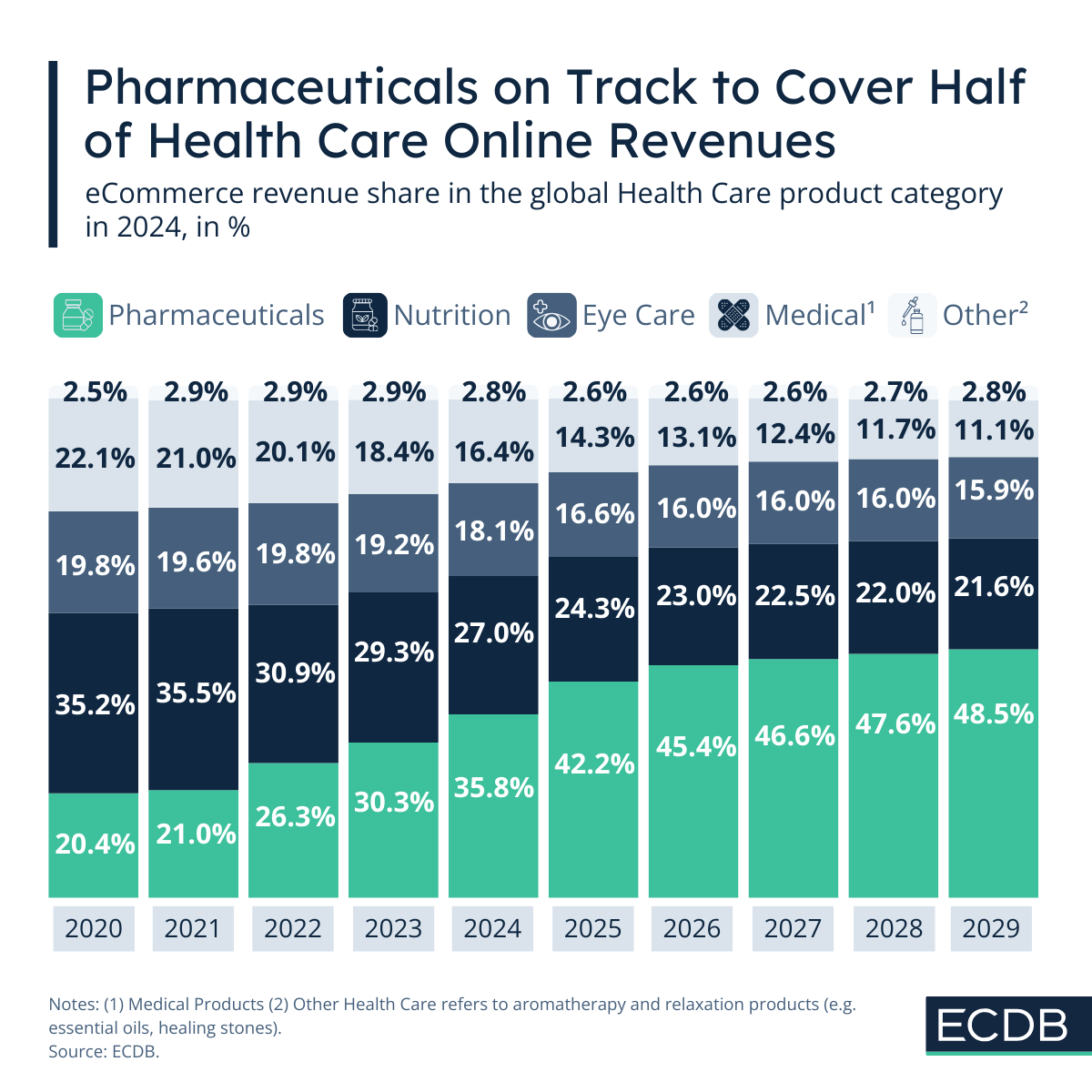Some eCommerce markets for product categories are undergoing profound changes as consumer perception, national regulation and market trends evolve. The online market for Health Care products is a prime example. Since the pandemic in 2020, the Pharmaceuticals subcategory has drastically increased its share of total Health Care eCommerce sales.
By 2029, Pharmaceuticals are expected to account for 48.5% of the Health Care products category. Here is why.
COVID-19 Paved the Way for Pharmaceuticals Expansion in eCommerce
In 2020, at the beginning of COVID-19, Pharmaceuticals accounted for 20.4% of total Health Care eCommerce product revenues. It was still just the second-largest subcategory, behind Nutrition products with a 35.2% share and just ahead of Eye Care products with 19.8%.
The need for online solutions during the global health crisis has spurred providers, regulators and consumers to create a basis for the Pharmaceuticals eCommerce market. In the years since, instead of contracting, the market has expanded.
Much like the concept of online pharmacy itself, Pharmaceuticals eCommerce has proven to bring lasting benefits, which is why the subcategory has surged in the years since 2021. Compared to the other subcategories, Nutrition, Eye Care, Medical Products, and Other Health Care (which includes aromatherapy and relaxation products), Pharmaceuticals are now the highest grossing subcategory in Health Care eCommerce. By 2025, Pharmaceuticals are projected to account for 42.2% of global Health Care online revenues.
Pharmaceuticals eCommerce Is Embedded in Complex Market Conditions
The growth of Pharmaceuticals eCommerce does not stop there. By 2029, its share is expected to reach 48.5%, very close to half of all Health Care eCommerce revenues. The development is global, which emphasizes the universality of benefits this sector of the online market brings.
What exactly are the reasons for its expansion? Pharmaceuticals include both OTC (over the counter) medicines and prescription drugs. OTC medicines are easily distributed because they are not subject to regulatory restrictions. In contrast, prescription drugs require the legal framework and administrative procedures to ensure the safe delivery of prescription medicines to the authorized user.
Here is the thing: Pharmaceuticals, especially prescription drugs, are highly valuable and, due to the limited accessibility of prescription drugs, are sought after by consumers with or without medical clearance. It is this very value that contributes to the rising share Pharmaceuticals take on in the Health Care category. As regulations in different countries change in favor of their distribution, pharmaceutical sales will become even more important for eCommerce.
Already the trend towards consumer convenience in Health Care eCommerce is well underway. E-receipts enable the digital infrastructure to distribute prescription medicines to online users, online pharmacies are rising in popularity around the world and Health Care products have even broken into quick commerce in key regions. This means they can be delivered in shorter time frames, like within the hour or within the day. All these trends and more are contributing to the growing importance of pharmaceuticals.










